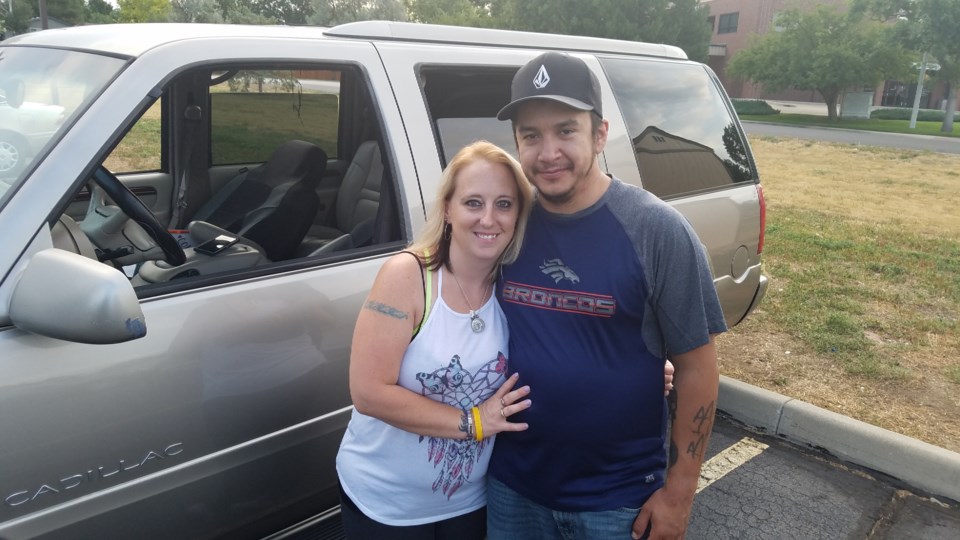Heather Surovik still smiles as she considers all her recent setbacks, including being kicked out of a department store parking lot in June just as she and her boyfriend tried to bed down for the night in the back of their battered 19-year-old SUV.
“A cop knocked on our door and said we couldn’t sleep there anymore, the store would not allow it,” 35-year-old Surovik said. “So we moved on.”
Surovik said she became homeless after a previous relationship led her to lose her job and place to live. Her new boyfriend lost his job due to the COVID-19 outbreak and they couldn't stay with a family member because the landlord wouldn’t allow it.
Surovik said she feels fortunate now that she is part of the Homeless Outreach Providing Encouragement, or HOPE. SafeLot program. The night after they were kicked out of the store’s parking lot, she and 37-year-old boyfriend, Nick Atencio, pulled their 2001 Escalade into the parking lot of a Longmont church that agreed to be part of SafeLot.
She and Atencio were able to shower, get a hot meal and form friendships with their neighbors, all living out of their cars because of a loss that forced them out of their homes or apartments. Since June 15, they have parked their vehicles at the church lot and slept without fear they would be told to leave.
The Leader has agreed not to disclose the location of the SafeLot for fear the participants would be harassed.
“This is like a luxury if you are homeless,” Surovik said. “This is the type of program that should be everywhere. It could solve a lot of problems with the homeless trying to get back on their feet and be a part of society.”
SafeLot is the brainchild of Joseph Zanovitch, executive director of HOPE. SafeLot mimics similar programs on the West Coast, where churches and community centers reserve a limited number of spaces in their parking lots for homeless who prefer to live out of their cars instead of a shelter.
“A lot of people, who have lost their homes, see their car or truck as the last piece of their old homes and life,” Zanovitch said. “And for many of them, especially women, they don’t want to go to shelter for safety reasons. Shelters sometimes are not the pleasant places to be in.”
Zanovitch said the Longmont SafeLot program could be the only one in the state, since it caters specifically to individuals who are out on the street. It also provides them resources and security to become working members of society.
“This is a temporary stop, so people can get themselves back on their feet,” he said. “I am always happiest when someone tells me they are ready to leave SafeLot.”
The church affords eight spaces for 13 SafeLot participants. They park well away from each other but many still act like neighbors and swap stories about their day.
Prospective applicants are all screened through interviews and background checks, said Renee Ikemire, SafeLot program manager.
Low-level felons can be accepted into the program. But those guilty of violent or sexual offenses are not, Ikemire said.
The SafeLot is open from 6 p.m. to 8 a.m and participants can go into the church’s community room for food that is brought in by a local food bank, Ikemire said. They can shower and prepare for the next day. They also have access to a laptop.
Ikemire, who was homeless for a time, said SafeLot provides a place where people can rebound from the bad events and choices that made them homeless.
“I would have truly appreciated a program like this,” Ikemire said. “Being homeless is truly exhausting and this gives you time to rest and prepare and get better.”



